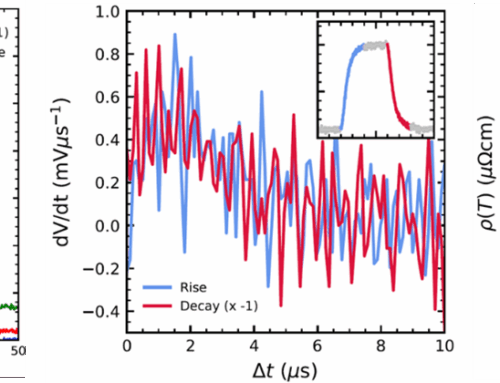Michal Baranowski and Paulina Plochocka, LNCMI-Toulouse
Organic-inorganic halide perovskites have become the “next big thing” in emerging semiconductor materials, with their unprecedented rapid development and successful application in high-performance photovoltaics. Yet, their inherent instabilities with respect to moisture remain a crucial challenge for these materials. This directed the interest of the scientific community to perovskite derivatives such as two-dimensional (2D) perovskites. These materials are significantly more stable and possess higher tunability of their properties which expands the field of their application from energy harvesting through LED to single-material-white-light emitters.
The 2D perovskites are often regarded as perfect quantum wells, because they are not plagued by interfacial roughness or intermixing characteristics of epitaxially grown quantum wells. The well layers consist of planes of lead-halide octahedra, separated by organic spacers. The research of these natural perovskite quantum wells is in its infancy and their structural, dielectric, optical, and excitonic properties remain to be explored, in particular the influence of organic spacers. Although the band-edge states are composed of lead and halide orbitals, the organic ligands affect the band structure and the electron-phonon coupling, via distortion of the octahedral cages. The optical properties of these materials are dominated by strong electron-hole attraction, resulting from dielectric confinement. Very often these materials exhibit complex absorption and emission spectra with many sidebands. Their origin generates much controversy since they can be attributed to phonon replicas or to bound excitonic states. We address this issue for (CnH2n+1NH3)2PbI4 (with n = 4, 6, 8, 10, 12) by means of optical spectroscopy in magnetic fields up to 67 T. We show that the complex absorption features shift parallel in magnetic field, indicating the phonon-related nature of the observed side bands. Moreover, we have found that the diamagnetic shifts of the high- and low-temperature crystal phases of the investigated materials are significantly different (Figure), pointing to a notable modification of the carrier effective mass and/or dielectric screening upon the phase transition into the low-temperature phase, entailing an octahedral distortion. Since the phase transition occurs close to room temperature, our results provide an additional way for 2D perovskite engineering via moderate cooling achievable by Peltier coolers.

Figure: Zeeman splitting and diamagnetic shift of the high- and low-temperature phase of the crystals with n = 8.
Phase-Transition-Induced Carrier Mass Enhancement in 2D Ruddlesden–Popper Perovskites, M. Baranowski, S. J. Zelewski, M. Kepenekian, B. Traoré, J. M. Urban, A. Surrente, K. Galkowski, D. K. Maude, A. Kuc, E. P. Booker, R. Kudrawiec, S. D. Stranks, and P. Plochocka, ACS Energy Letters 4, 2386 (2019).
DOI: https://arxiv.org/abs/1909.06061
Contact: paulina.plochocka@lncmi.cnrs.fr; michal.baranowski@pwr.edu.pl






